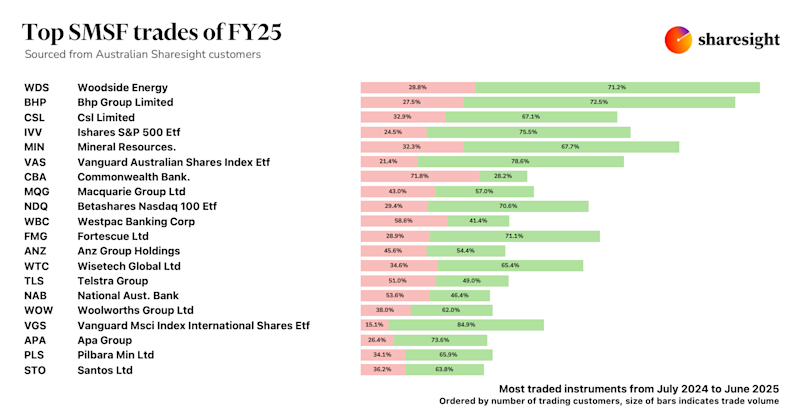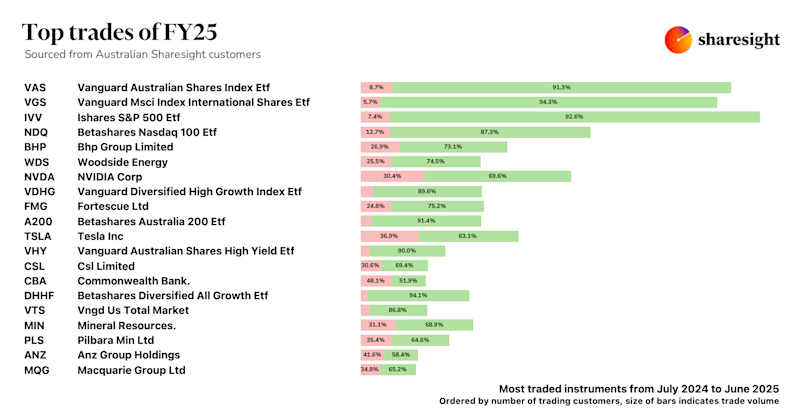How to take advantage of a bull market
Disclaimer: This article is for informational purposes only and does not constitute a specific product recommendation, or taxation or financial advice and should not be relied upon as such. While we use reasonable endeavours to keep the information up-to-date, we make no representation that any information is accurate or up-to-date. If you choose to make use of the content in this article, you do so at your own risk. To the extent permitted by law, we do not assume any responsibility or liability arising from or connected with your use or reliance on the content on our site. Please check with your adviser or accountant to obtain the correct advice for your situation.
‘Bull market’ is not an official term but is generally applied to share markets when investor sentiment is positive and major indices like the S&P 500 are consistently climbing. Bull market rallies can occur for many different reasons or a combination of factors, including a strong economy, high consumer spending, increasing stock valuations and higher-than-expected earnings releases. Let’s look at how bull markets have unfolded previously and how you can take advantage in the future.

What is a bull market?
A bull market occurs when financial markets rise for a period of time, varying from a few months to many years. Bull markets give investors confidence as they see their portfolios steadily grow, although there may be some dips in certain shares or sectors along the way. As this implies, bull markets are characterised by optimism as growth investors are rewarded by a surging market, which then attracts greater trading volumes, higher valuations, and more investors.
These psychological effects and increased speculation make it harder for the market to accurately value companies or sectors, and it is difficult to predict when market trends may change. This is compounded by the fact that there is no specific and universal metric used to identify a bull market. However, the most common definition of a bull market is a scenario where stock prices rise by 20% or more from their most recent lows.
Are we entering a bull market?
Bull markets generally take place when an economy is strengthening or when it is already strong. Indicators can include strong gross domestic product (GDP) numbers, a drop in unemployment or a rise in corporate profits. Traditionally, both investor and smaller company confidence climbs throughout a bull market period, with the former more likely to invest in growth stocks and the latter more likely to consider listing (via an IPO).
While experts were divided in 2023 on whether we were in a bull market, some of the more recent evidence is compelling. February 2024 saw key US index the S&P 500 hitting a record high, closely followed by the Dow Jones Industrial Average, with the Nasdaq Composite trading at a 52-week high. Australia’s equity benchmark, the S&P/ASX 200 also exceeded its previous closing high in February on the back of the three big miners and biggest banks recording their own all-time highs. By any measure, this suggests the bulls are running!
Bear market vs. bull market
A bear market is the opposite of a bull market, and occurs when a market experiences prolonged price declines. The term is typically applied to scenarios where securities prices fall 20% or more from recent highs amid widespread pessimism and negative investor sentiment. The good news for investors is that bull markets tend to last longer than bear markets — typically stretching out for two to five years, while bear markets usually wind down within a year.
A recent example of a bear market in Australia would be the ASX plunging 37% in a few weeks between February and March 2020 as global markets reacted to the coronavirus pandemic. Most recently, the All Ordinaries Index plummeted from an all-time high of 7,926.80 on 4 January 2022 to 6,663.30 by June 2022 as rising interest rates began to bite. Other high-profile global examples include the GFC, sparked by a cratering US housing market and credit crunch, the Wall Street Crash of 1929, which sparked the Great Depression, and the bear market that followed the dot-com bubble collapse in the 2000s.
Best strategies for investing in a bull market
If you believe we are in the early stages of a new bull market, then now is the time to act. There are several strategies you can adopt to capitalise on rising stock prices.
Buy and hold
Buy and hold involves purchasing securities with the intention of keeping them for an extended period, as a bull market may run for a few years. In essence, buy and hold investors believe in the potential of their chosen assets to appreciate over time, yielding substantial returns.
Retracement additions
While bull markets generally trend upwards, individual stocks and sectors will experience small dips and flat periods even if they ascend over a longer time frame. Some investors watch for these retracements within a bull market and aim to ‘buy the dip’ during these periods. The theory is that the price of the security in question will quickly move back up and the investor will benefit from the discounted purchase price.
Dollar-cost averaging
Dollar-cost averaging is the investment strategy of dividing up the total amount to be invested and periodically purchasing stocks. This is done to reduce the impact of volatility and emotion on an investment. While investing a large lump sum at the beginning of a bull run will always beat a dollar-cost-averaging approach, it is more susceptible to volatility or major market declines.
Taking profits at regular intervals
It is important to remember that the steady, prolonged increase of price in bull market runs still consists of both rising and falling individual share prices. Therefore, it is essential to keep a close eye on the market and lock in profits at regular intervals. This will allow you to build on other positions or further diversify your portfolio.
Growth vs. value investing
Growth stocks and sectors generally rise more explosively than peers in a bull market as investors focus on faster-growing assets over long-term fundamentals. As a result, bull market darlings are often young, innovative companies that are using technology to create efficiencies or solve global issues. However, growth stocks are often a riskier bet than more stable, established companies. It is therefore a good idea for more patient investors to diversify with a few value stocks that may be trading for less than their intrinsic value in a bull market.
Risks of investing in a bull market
Bull markets often result in asset prices becoming overvalued due to excessive optimism and speculation. This can lead to a correction or market downturn as prices return to more reasonable levels, which can cause investors to experience significant losses. Complacent investors often miss the signs that the market is changing as prolonged periods of positive returns mean they aren’t adequately prepared for market reversals. It is also easy to be influenced by the behaviour of others, resulting in exaggerated market risks driven by emotional or overconfident decisions.
The takeaway
If you’re investing for the long-term, time in the market tends to beat timing the market. Regardless of whether you’re investing in a bull market or a bear market, there are always opportunities to make returns, provided you do your research and invest in quality assets that fit your investing strategy. Keeping track of your portfolio’s performance and using strategies such as benchmarking, performance attribution analysis and multi-period analysis is also crucial in evaluating your investing strategy, comparing your performance against the market and seeing the impact of market events on your portfolio’s performance.
Track all your investments in one place with Sharesight
Thousands of investors like you are already using Sharesight to manage their investment portfolios. What are you waiting for? Sign up and:
- Track all of your investments in one place, including stocks, ETFs, managed/mutual funds, property and even cryptocurrency
- Automatically track your dividend and distribution income from stocks, ETFs and mutual funds
- Run powerful reports built for investors, including performance, portfolio diversity, contribution analysis, exposure, multi-period, multi-currency valuation and future income
- Easily share access to your portfolio with family members, your accountant or other financial professionals so they can see the same picture of your investments that you do.
Sign up for a FREE Sharesight account and get started tracking your investment performance (and tax) today.
FURTHER READING

Sharesight users' top 20 trades – June 2025
Welcome to the June 2025 edition of Sharesight’s monthly trading snapshot, where we look at the top buy and sell trades by Sharesight users in all markets.

Top SMSF trades by Australian Sharesight users in FY24/25
Welcome to our annual Australian financial year trading snapshot for SMSFs, where we dive into this year’s top trades by Sharesight users.

Top trades by Australian Sharesight users in FY24/25
Welcome to the FY24/25 edition of our Australian trading snapshot, where we dive into this financial year’s top trades by Sharesight users.